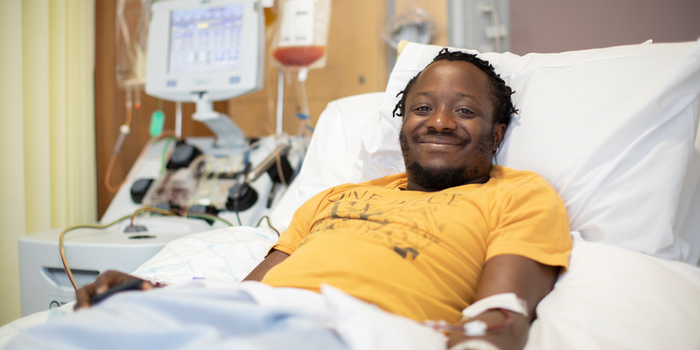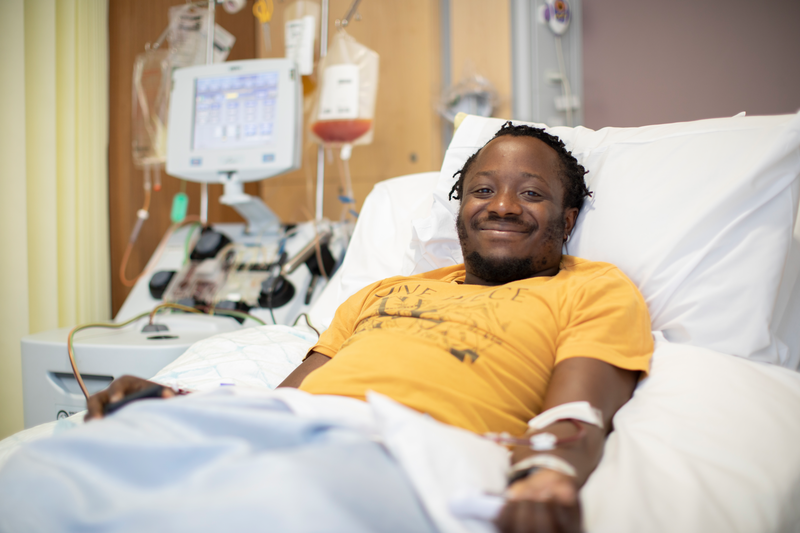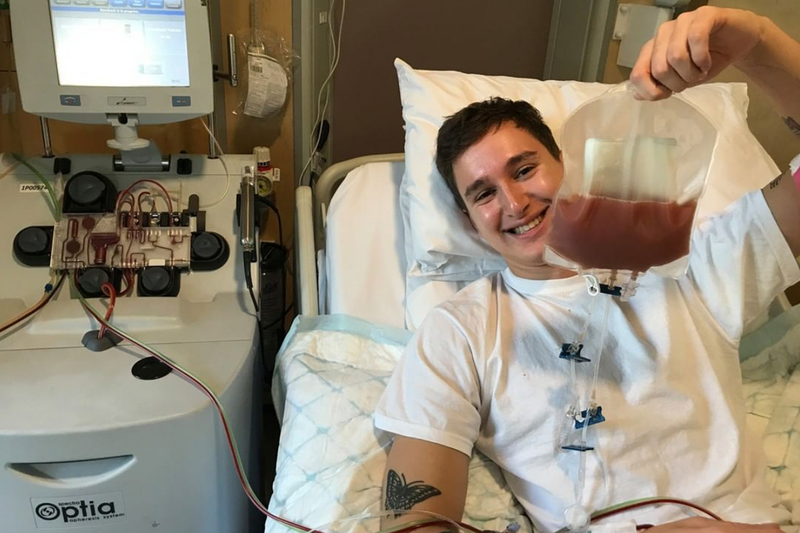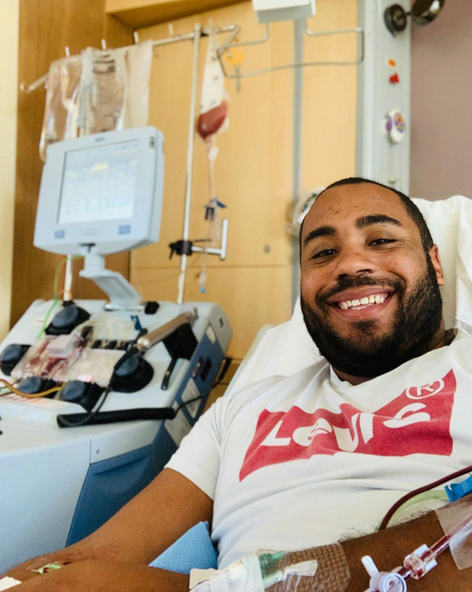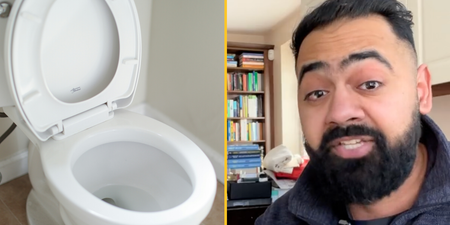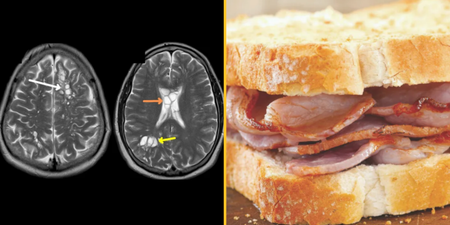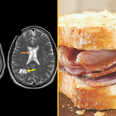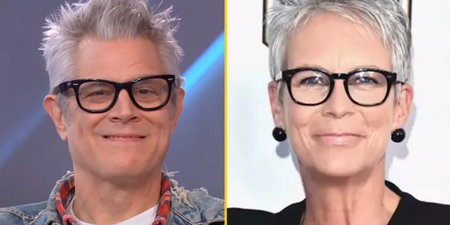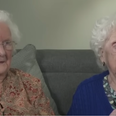Brought to you by Anthony Nolan
It only takes a couple of minutes to sign up, but it could save a life…
Have you ever thought about stem cell donation?
It’s not a topic that’s discussed often, so you’re probably not alone if you haven’t given it much thought. But in some cases, stem cell transplants could save a life.
Stem cells are immature cells, meaning they can divide and develop into all the different types of specialised cells your body needs, including blood cells. Blood stem cells are found in the bone marrow and act like templates for creating millions of new blood cells every single day, meaning we need these essential blood stem cells to survive.
But sometimes, when a person’s new blood cells don’t work properly, they may develop a blood cancer or a blood disorder. That’s where stem cell transplants play a crucial role.
For someone with blood cancer or a blood disorder, a stranger donating their stem cells could be their only chance at survival, showing just how important it is to join the stem cell register. But many of us still haven’t signed up to donate, despite how life-changing one singular stem cell transplant can be.
That’s why charity Anthony Nolan are calling out for more young men aged 16-30 to join their registry. Men in this age category provide more than 55% of all stem cell donations but make up only 18% of the registry. If you’re under 30, you’re 13 times more likely to be selected for donation than other people on the UK aligned registry, making each and every donation from this age cohort invaluable.
Similarly, your donations could make a huge difference if you’re from a minority ethnic background. White, northern European patients have a 72% chance of finding the best possible unrelated donor match, but this drops to just 37% if you’re from a minority ethnic background. As a result, Anthony Nolan needs more people from minority ethnic backgrounds to sign up to donate.
With all of that in mind, we’re taking a closer look at what stem cell donation really involves, to ensure you haven’t fallen for any dodgy misconceptions surrounding the topic. We’re sharing some need-to-know facts surrounding stem cell donation, as well as some important stories from real-life donors, so you can make an informed decision when it comes to joining the registry.
And if you’re inspired by what you’ve learned, you can join the Anthony Nolan registry today HERE.
Fact #1: Stem cell donation saves lives.
For those suffering from blood cancer or a blood disorder, a stem cell transplant may be their best chance of survival. Blood cancer accounts for 9% of all new cancer cases diagnosed in the UK and stem cell donation can play a huge role in treatment for these patients.
About 2,400 people in the UK need a stem cell transplant from a stranger every year, showing just how important it is to get registered if you can. Doctors will give new, healthy stem cells to the patient via their bloodstream, where they begin to create healthy red blood cells, white blood cells and platelets.
Doug Mbang, a 30-year-old medical student in Nottingham, felt this firsthand when he donated stem cells: “It feels absolutely amazing to know that doing this changed someone’s life. When you think about saving a life, it’s not just their life that’s important – it’s their friends and family too, everyone who’s part of that person’s life. You might be saving one person but you’re having an impact on a whole family and community, so it feels amazing” he said.
Fact #2: : For 90% of donations, stem cells are donated in a way similar to giving blood
There are loads of misconceptions around how stem cells are donated and it can be associated with invasive medical procedures, but this usually is not the case.
If you’re a match for someone, you’ll be asked to donate via one of two methods – either through your bloodstream or from your bone marrow. But 90% of donors donate through Peripheral Blood Stem Cell (PBSC), a simple outpatient procedure, similar to giving blood.
Jacob Hawley, a stand-up comedian from London, discovered this first-hand when he donated stem cells in 2017.
“When I’ve told friends about donating, they often think it’s one of those horror stories, where you’re going to be laying in a hospital bed with someone drilling into your spine – which is absolute rubbish. That’s one thing that I’m so keen to emphasise whenever I talk to anyone about it. It couldn’t be more comfortable, and I’m speaking as someone who has quite a severe needle phobia,” he revealed.
Fact #3: You’ll only be asked to donate if you’re a match
Not everyone who joins the register will be called to donate, meaning you’ve nothing to lose by signing up.
If you are identified as a potential match for a patient, Anthony Nolan will get in touch via call, email or text and organise some follow-up health checks and ensure it’s safe for you to donate. Your donation method will be explained to you in advance, as well as any side-effects you can expect afterwards, making the whole process really straight-forward.
Twenty eight year-old Carney Bonner, from Wiltshire, first joined the register while he was in uni, and was called to donate a few years later in 2019. “If, God forbid, anything was to happen to me and I needed a transplant, I’d hope that someone out there would be willing to donate. So I thought, why not get on the register, just in case someone needed me.
“Donating my stem cells was more simple than giving blood – which sounds crazy to say, but everything was just fitted around me… It was just so easy. It didn’t stop me from doing anything or get in the way of my life at all.”
Join the stem cell register today at anthonynolan.org/joe.
Brought to you by Anthony Nolan
